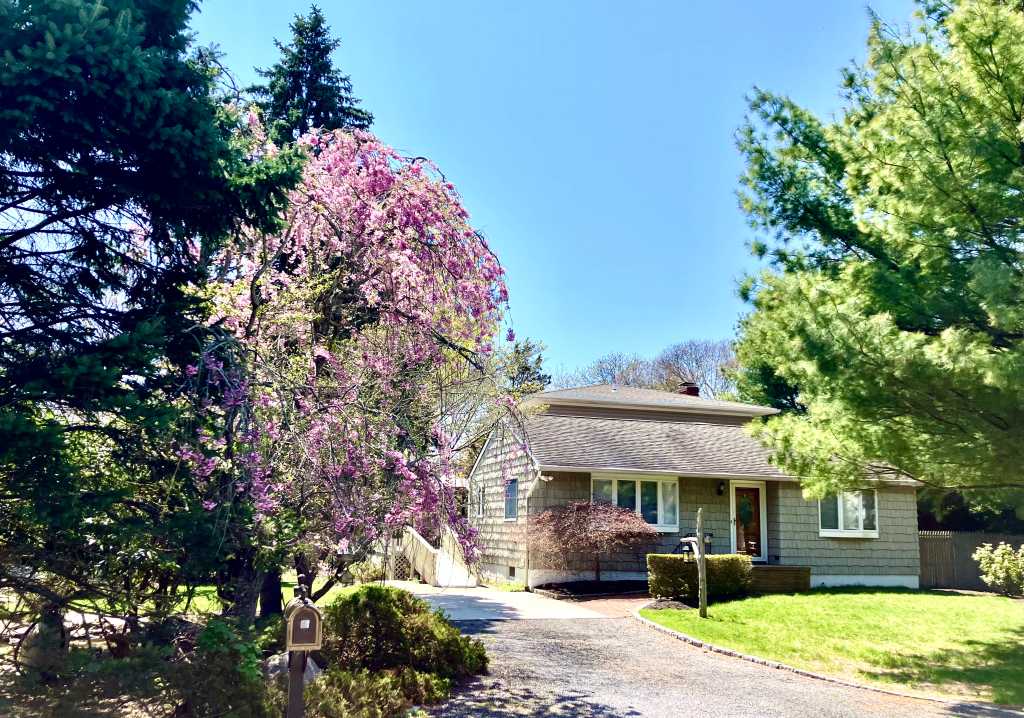Notes from the Garden: Landscape Design That Suits You

Landscape design can be divided very simply into three approaches: formal, informal and organic. The garden style that will best suit you depends on your personal taste and the kind of aesthetic that appeals to you. The right design should respect the architectural style of the building and be appropriate for the environment where it will be created.
Formal landscapes are suitable for small or large plots. They emphasize symmetry and balance with structural lines that lead the eye towards their intersection points, lending the formal landscape a sense of stability and serenity. The beds and border are designed with geometric lines alongside the paths and perimeters of the property, usually with a central focus on some kind of garden structure, such as statues, birdbaths or water features. Low clipped hedges bordering flowerbeds with simple color schemes are also typical design elements in formal landscapes, as are trees and clipped shrubs alongside the foundation of the house and perimeter. Collections of containers with single color annual flowers can adorn patios and decks to complement the overall theme of the landscape.
Informal landscapes, by contrast, have no straight lines organizing the space, but rather organic lines that contour to borders and beds. Plants are grouped into flowering drifts that sweep through the plot in an organic curve. The lines of an informal garden give more depth to the overall landscape aspect. Your eyes follow the curve of the natural contour of the beds and borders until it vanishes behind a screen of various plants. Borders with undulating edges and plants of varying heights, textures, and mixed soft and bright colors, complement planted areas. Trees, shrubs, and flowers are planted in layers to enforce the informal, natural look.
Organic landscapes are better known as “naturalistic” gardens. The plant material used in naturalistic gardening mimic what exists in nature. Wherever the site is located (woodlands, farm fields, or waterfront), the garden will echo the natural landscape and help anchor the architectural style of the house, giving it a feeling of place. These landscapes combine native plants with well-adapted non-native plants.
Although there are a variety of native plants to work with, the species most appropriate for your garden are often those closest at hand. While many plants deemed “native” could be found wild in a general sense, they may not actually be the right plants for your specific environment. Because the term “native” is subjective, it’s important to remember that many conditions determine whether a plant is right for a certain environment. Plants that grow well in arid conditions, for example, may be considered “native”, but only in arid locations.
A woodland garden, for example, can have tall Canopy trees, shrubs, herbaceous foliage, and flowering plants. Low ground covers can be added to develop a garden; however in this case, they should be shade-tolerant plants with shallow roots to ensure they thrive in this particular environment. In addition, the soil should be improved to maximize the amount of nutrients available for new developing plants.
Regardless of which style suits your environment, architectural style and personal taste best, landscape design can be improved following these basics. Be bold when planting in clumps or drifts for greater impact. Select plants of different heights and install them in a gradation of heights with taller plants in back and shorter plants in front to increase depth and visibility. Allow plants along the edges to intermingle for added beauty. Planting in layers helps the surroundings evolve in a way that minimizes the effect of rigid lines, giving the impression of endless views. Trees, shrubs and flowers should be planted for a succession of blooms, ensuring color over a long period of time. Textures and shapes should also be considered, as there are many different forms that can be utilized, including bushy, spikey, upright, sprawling, trumpet-shaped flowers, and bold, glossy leaves.
To achieve a pleasant landscape in harmony with nature through any style of design, the use of a variety of plants, materials and structures is essential. Consistency and proper planning regarding the way each element blends with one another will guarantee a landscape style that will never fade.
Landscape Designer, Writer, and Lecturer Frederico Azevedo is the CEO of Unlimited Earth Care, Inc. which has been providing high quality landscape design and maintenance to the Hamptons for over 20 years. For more information, call our office at 631-725-7551, or visit us on the web at www.unlimitedearthcare.com.



